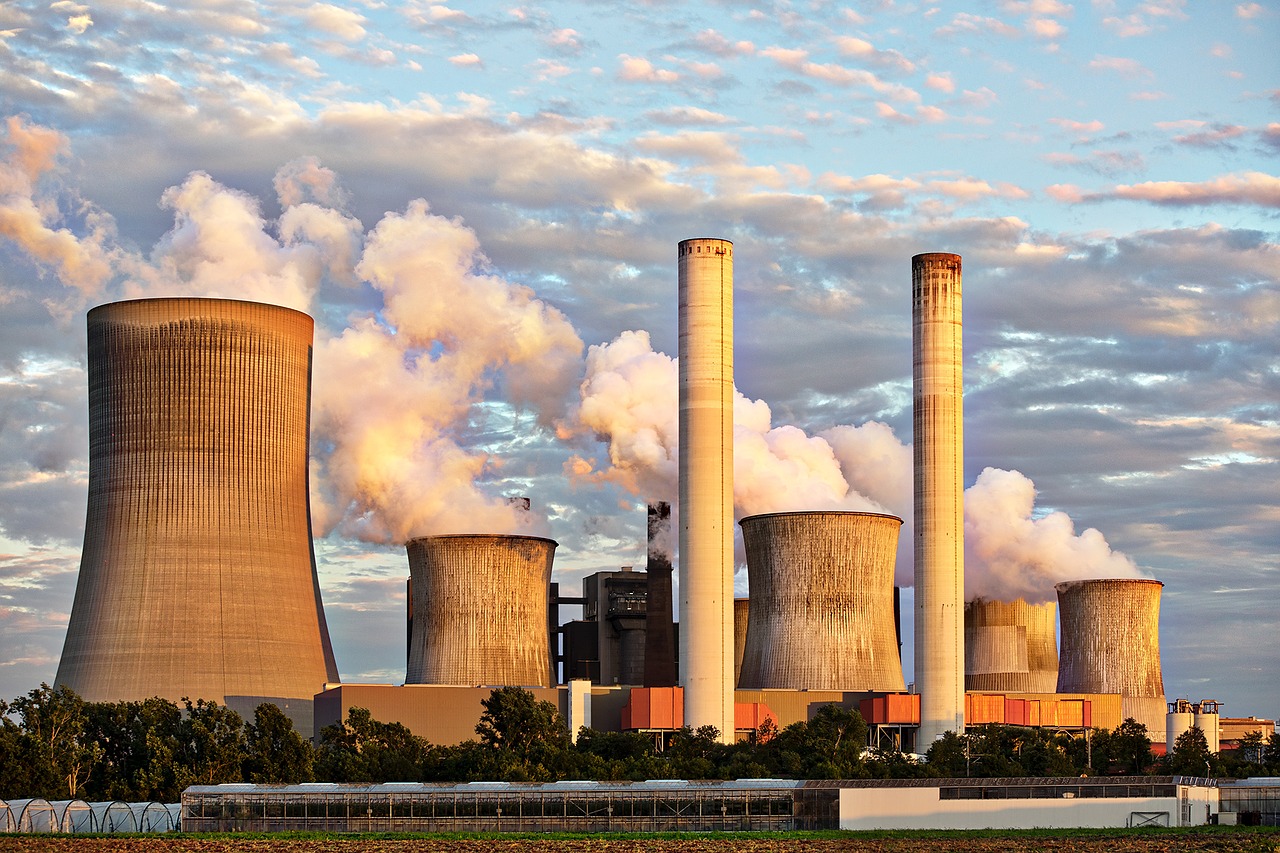Industrial cooling towers are heat rejection structures that remove waste heat from machinery, process, or processed material to the atmosphere using a fluids such as air, water or any other chemical.

Cooling towers are the core component of any industrial process as they help maintain efficiency and output.
The various types of cooling towers include: natural convection hyperboloid towers for nuclear and thermal power stations; forced convection hyperboloid towers; HVAC cooling towers for small industrial and large commercial buildings; field erected cooling towers; package cooling towers; and many more.
Principle
Industrial towers work on the principle of evaporative cooling (heat convection).
Industrial waste heat is carried through water pipelines since water has a very high specific heat capacity. When is brought into contact with ambient air, heat convects from water to air through evaporation.
This results in heat dissipation and cooling.
Heat Transfer Methods
The three common heat transfer mechanisms employed are:
1. Dry Cooling
Some towers operate by transferring heat through an partially adiabatic surface that separates the working fluid from ambient air, such as in a tube to air heat exchanger, utilizing convective heat transfer. They do not use evaporation.
2. Wet Cooling
Open circuit cooling towers operate on the principle of evaporative cooling.
Here, both the working fluid and the evaporated fluid are water.
3. Fluid Cooling
Closed circuit cooling towers are hybrid structures that pass the working fluid through a tube bundle, upon which clean water is sprayed and a fan-induced draft is applied.
The resulting heat transfer efficiency is much closer to that of a wet cooling tower, with the added advantage of protection from environmental conditions as provided by a dry cooler.
Many industrial towers utilize air to cool the flow of water in them.
Based on this, they can be categorized as natural draft or forced draft (heat convection).
Natural Draft Towers utilize the tendency of warm air to rise and cold air to descend to induce cooling (also called convective heating).
Forced Draft Towers utilize motors and fans at the air exit of the cooling tower to draw air through the cooling tower. They use fans at the intake in the cooling tower to push air through the tower.
Areas of Application
Major industries that require massive amounts of heat transfer and convective cooling including power generation, petroleum refining, chemical processing, sugar manufacturing, air condition & refrigeration, and steel production.

